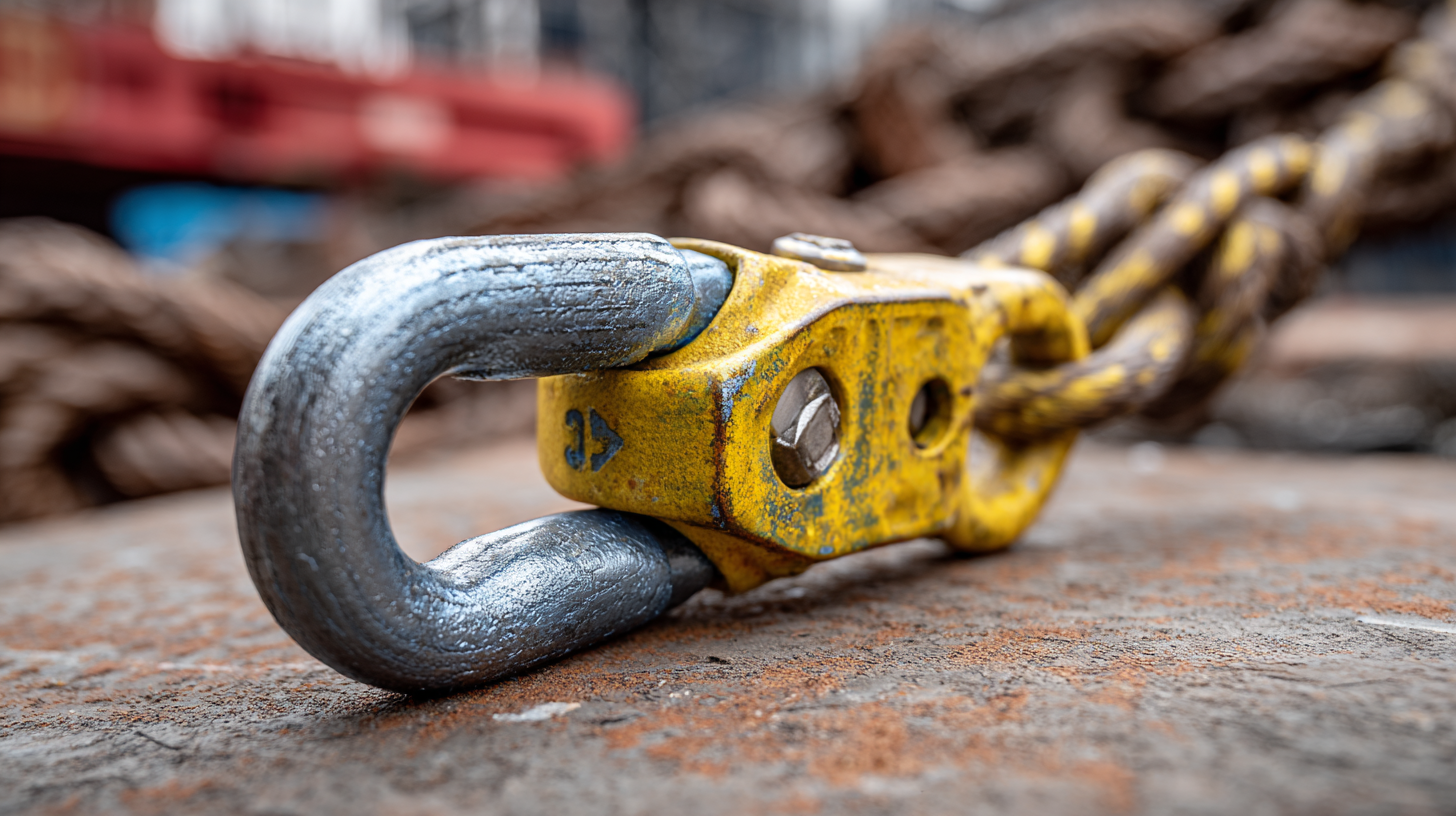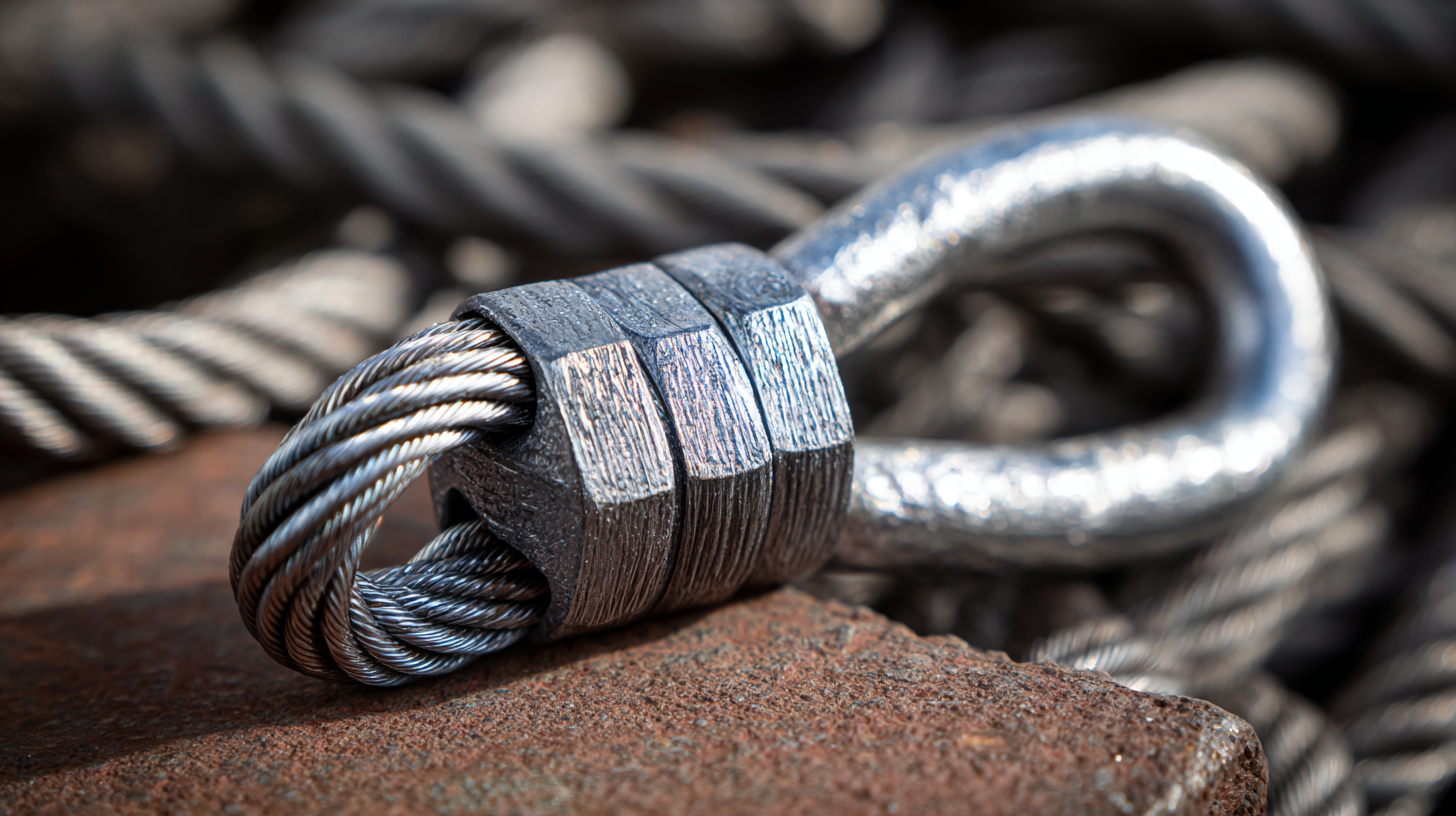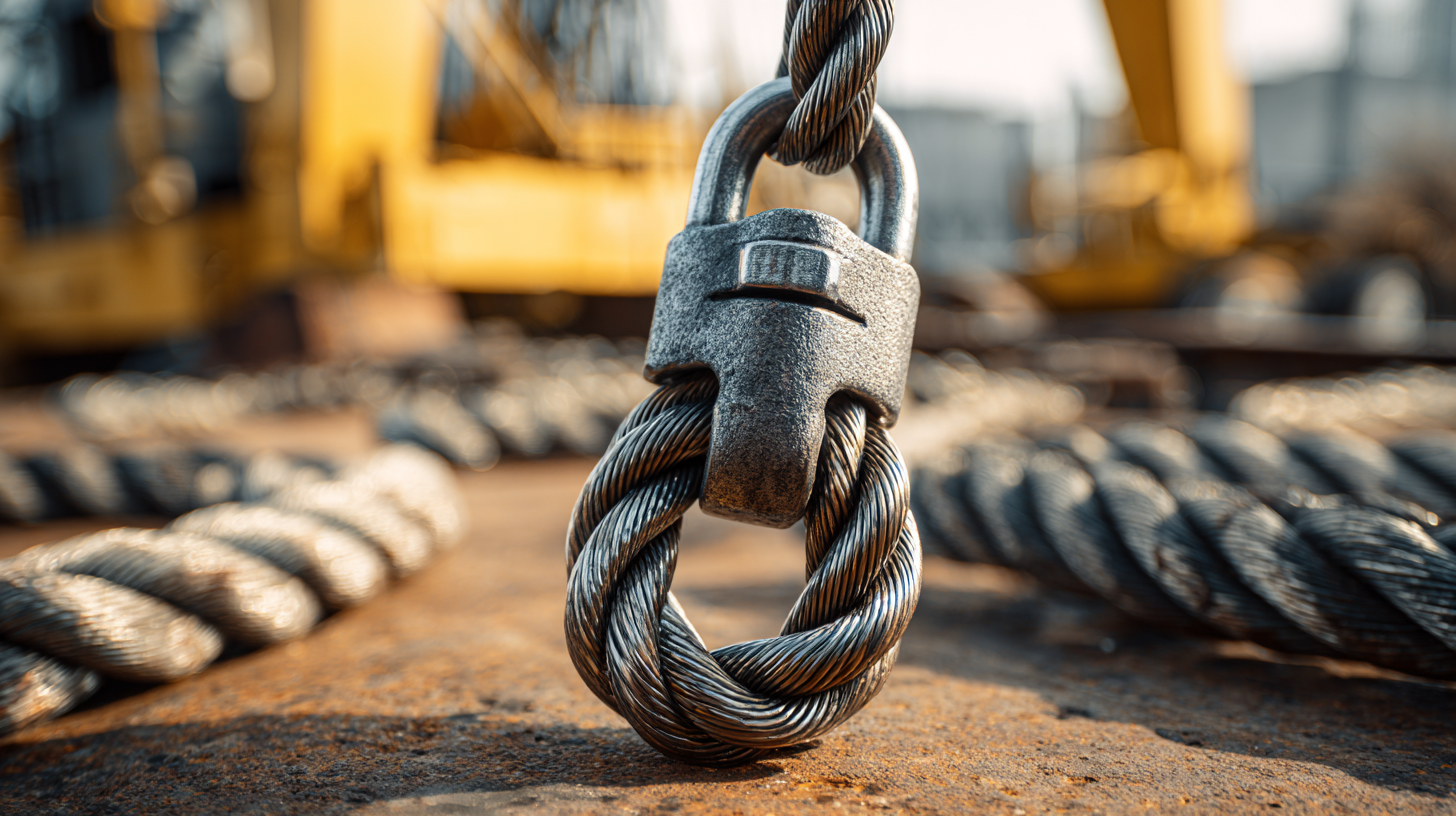In the world of heavy lifting and rigging, the importance of choosing the right equipment cannot be overstated, especially when it comes to wire rope shackles. These versatile devices play a crucial role in a variety of industries, from construction and maritime to mining and agriculture, by providing a reliable means to connect various components of lifting systems. With so many options available on the market, understanding the different types of wire rope shackles and their specific applications is essential for ensuring safety and efficiency in any operation. In this blog, we will explore the top industry applications of wire rope shackles, highlighting key features and considerations to guide you in selecting the right one for your needs. Whether you are a seasoned professional or new to the field, this comprehensive guide will equip you with the knowledge to make informed decisions about your lifting equipment.

Wire rope shackles are crucial components in various industries, primarily used for lifting and rigging applications. A wire rope shackle typically consists of a U-shaped metal body with a pin that can be easily inserted or removed. Understanding the different types of wire rope shackles is essential for selecting the right one for specific needs. The most common types include the bow shackle, which provides a larger attachment point and is ideal for lifting applications, and the D-shackle, known for its strength and suitability for situations where space is limited.
According to a report by MarketsandMarkets, the global wire rope market is projected to grow from $2.4 billion in 2020 to $3.6 billion by 2025, indicating a significant demand for high-quality shackles that can meet safety and operational efficiency standards in various sectors such as construction, marine, and oil and gas. When choosing a wire rope shackle, factors such as the load capacity, material strength, and environmental conditions should be considered. This ensures that the selected shackle not only complies with safety regulations but also enhances the overall reliability and durability of lifting operations in the field.
Wire rope shackles are essential connectors in various industries, providing safety and reliability in heavy lifting and rigging applications. These robust devices are widely used in construction, marine, and offshore industries, where heavy loads are a routine part of operations. In construction, wire rope shackles facilitate the secure attachment of lifting equipment to loads, ensuring that cranes and hoists operate efficiently while minimizing the risk of accidents. Similarly, in the marine sector, these shackles are critical for securing cargo and stabilizing vessels, enhancing safety at sea.
Another key application of wire rope shackles is in the energy sector, particularly in oil and gas exploration. Here, they are utilized for hoisting equipment during drilling operations and for securing lines in various installations. The ability to withstand extreme conditions and high tension makes wire rope shackles invaluable in these scenarios. Additionally, they are often employed in logistics and transportation industries, where they help in the loading and unloading of heavy machinery and materials, showcasing their versatility across numerous fields. When selecting a wire rope shackle, it’s crucial to consider the specific demands of the application to ensure optimal safety and performance.
| Application Area | Common Uses | Load Capacity (tons) | Material | Safety Standard |
|---|---|---|---|---|
| Construction | Lifting and securing loads | 2-12 | Steel | ASTM A-16 |
| Marine | Anchoring and mooring | 1-10 | Stainless Steel | ISO 9001 |
| Mining | Lifting heavy equipment | 5-20 | Carbon Steel | OSHA compliant |
| Transportation | Securing loads in transit | 3-15 | Alloy Steel | ANSI Z359 |
| Oil and Gas | Rigging and lifting equipment | 4-16 | High Strength Steel | API Spec 2C |
When selecting the right wire rope shackle for your needs, it is crucial to consider several key factors that can significantly impact safety and efficiency in industrial applications. The American Society of Mechanical Engineers (ASME) recommends that shackles should be rated based on a working load limit (WLL) that takes into account the type of rigging equipment used, the application, and any potential environmental factors. For instance, shackles operating in marine environments may require a different material composition to resist corrosion. A recent industry report highlighted that improper shackle selection can lead to a staggering 20% increase in equipment failure rates, underscoring the importance of choosing the right type for your specific task.

Another essential factor is the shackle design. Bow shackles, for example, offer a larger surface area for connecting multiple lines, making them ideal for lifting operations. Conversely, D-shackles are well-suited for applications requiring a more compact option. A study by the National Association of Manufacturers indicates that 30% of lift-related accidents could be avoided by using the appropriate shackle design. Moreover, it’s important to match the shackle size with the wire rope diameter for optimal performance, adhering to guidelines provided by regulatory bodies such as the Occupational Safety and Health Administration (OSHA). Understanding these factors not only ensures compliance but also enhances overall operational safety.
When selecting wire rope shackles for various industry applications, understanding the different materials and designs is crucial. Shackles are primarily made from steel, stainless steel, or synthetic compounds, each offering unique benefits. Steel shackles are renowned for their strength and durability, making them ideal for heavy lifting and industrial functions. However, they can be susceptible to rust and corrosion if not properly maintained. On the other hand, stainless steel shackles provide a better resistance to environmental factors, which is essential in maritime and chemical industries where moisture and corrosive substances are prevalent.
Design also plays a significant role in the functionality of wire rope shackles. D-shackles, for instance, are often used in applications that involve high load capacities due to their shape, which distributes weight evenly. Bow shackles, conversely, allow for more flexibility by providing a greater load-bearing surface, making them suitable for multi-directional loads. Additionally, various pin types, such as screw pins or safety pins, can enhance security during operations. Understanding these materials and designs will ensure you choose the right wire rope shackle that meets your specific operational needs while maintaining safety and performance standards.

When it comes to using wire rope shackles across various industries, adhering to safety standards and best practices is paramount. These devices play a crucial role in lifting and rigging applications, and their improper use can lead to accidents and injuries. Ensuring that shackles meet industry-specific safety certifications, such as those from the American National Standards Institute (ANSI) or the European Norm (EN), is vital. Regular inspections should also be conducted to check for signs of wear, deformation, or corrosion, ensuring that the shackles remain reliable and safe for use.
Best practices for using wire rope shackles involve understanding their load capacities and selecting the appropriate size and type for the specific application. Whether in construction, maritime operations, or entertainment rigging, the chosen shackle must be compatible with the rigging equipment in use. Additionally, proper techniques for securing and connecting shackles can prevent accidental disengagement.
Educating personnel on these best practices not only enhances workplace safety but also maximizes efficiency in operations where these essential tools are employed. By prioritizing safety standards and practices, organizations can mitigate risks associated with lifting and hoisting operations, ensuring a safer work environment for everyone involved.
